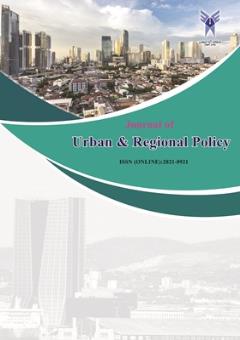New patterns of space organization in improving the quality of urban architecture ;a new step in urban policy(case study: Mashhad)
Subject Areas : Architecture
melika alizadeh hasan abadi
1
*
![]() ,
maryam gharavi al khansari
2
,
maryam gharavi al khansari
2
![]() ,
mohammadbagher kabir saber
3
,
mohammadbagher kabir saber
3
![]() ,
mehdi jabbari nooghabi
4
,
mehdi jabbari nooghabi
4
1 - Ph.D. student in Architecture, Department of Architecture, Islamic Azad University, Kish International Branch, Kish, Iran
2 - Department of Architecture ,Kish international Branch ,Islamic Azad University, Kish Island ,Iran; Assistant Professor, Faculty of Architecture, Campus of Fine Arts, University of Tehran, Iran|(Supervisor & Corresponding Author)
3 - Department of Architecture ,Kish international Branch ,Islamic Azad University, Kish Island ,Iran; Assistant Professor, Faculty of Architecture, Campus of Fine Arts, University of Tehran, Iran|(First Advisor Professor)
4 - Department of Architecture ,Kish international Branch ,Islamic Azad University, Kish Island ,Iran; Associate Professor, Faculty of Mathematical Sciences, Ferdowsi University of Mashhad, Iran |(Second Advisor Professor)
Keywords: quality improvement, spatial organization, urban development and policy making, digital oriented technology patterns, new complementary patterns,
Abstract :
Making a high-quality space requires an integrated logical organizing approach. Here, fruitful use of the capacities of digital technology and data becomes so significant. Moreover, communication between urban patterns and architecture is another significant feature of integrated urban policy making. Considering the issue, this mixed applied study was done to identify effective pattern processes using digital technology and to introduce a model of them. At the first stage, using thematic analysis method, different researches were explored to identify the components, criteria, and indicators of the patterns. Moreover, a questionnaire was designed by using the mutual effects of the indicators. Then, the questionnaire was answered by five available experts. At the second stage of thematic analysis, AHP method and expert choice were used. The prioritized results and sub-criteria of all indices were analyzed by the experts based on Likert scale. Then, to implement these components through the criteria and indices, by applying logical conclusions and Salingaros’ new presented complementary patterns for the solution of urban challenges, we identified effective patterns processes and tested the proposed structure for District 1 of Mashhad as a case. The major innovation of this study is using a specific method that resulted in the realization of complementary patterns and the explanation of pattern processes of space organization regarding socio-cultural components and space creativity using digital technology, 10 criteria, and 16 indices. Moreover, it depicted clearly the usability of effective patterns by the use of 21 palpable pattern relationships. The result is the expansion, adaptation, and strengthening of the language of patterns that are used in urban architecture. It also makes high quality link structures that would help the integration and improvement of urban architecture and structure. Accordingly, the important role of modern spatial developments in designing and developing urban policies are confirmed. It also shows the effectiveness and the necessity of proposed pattern processes, taking into account the current condition of District 1 of Mashhad

